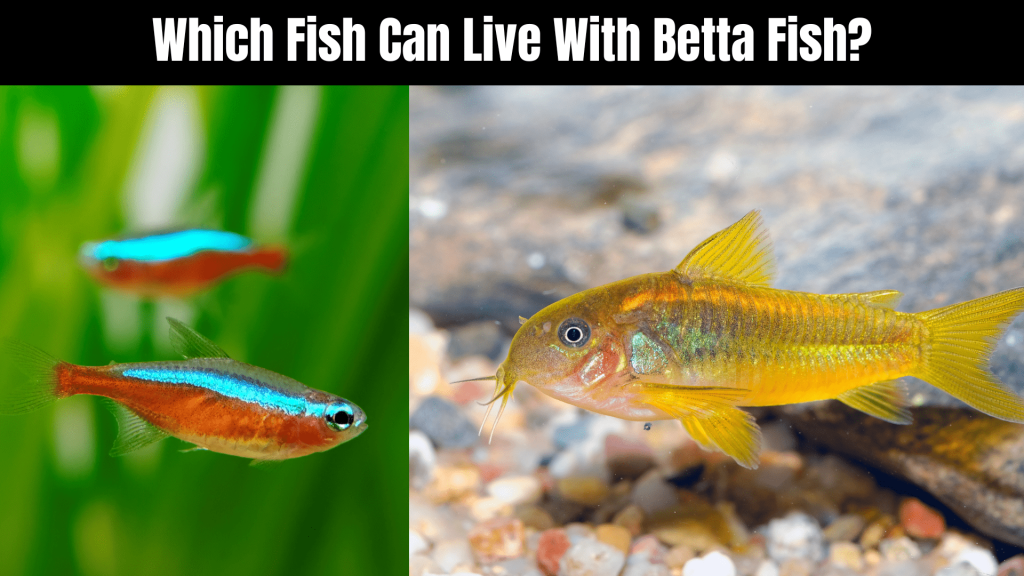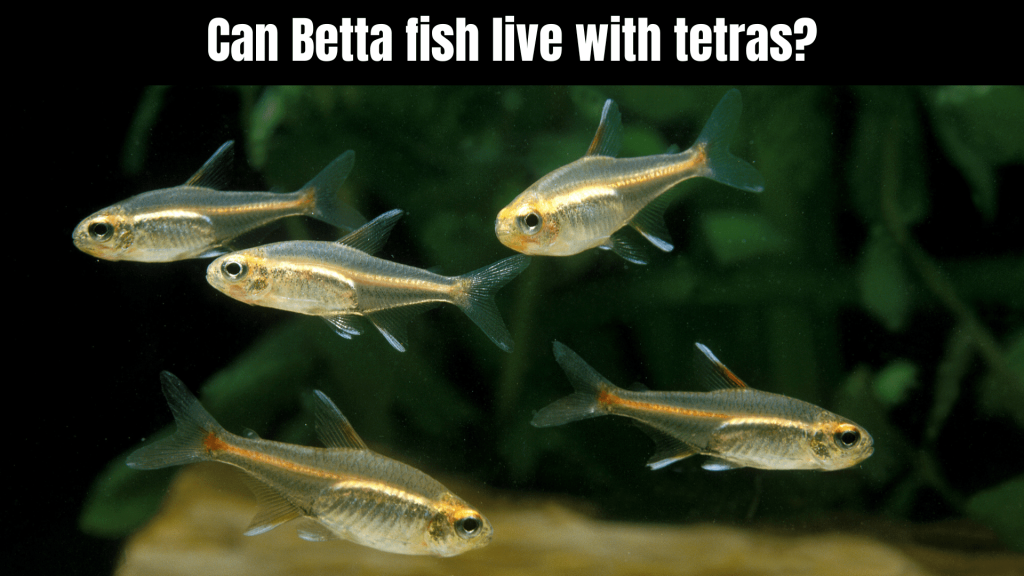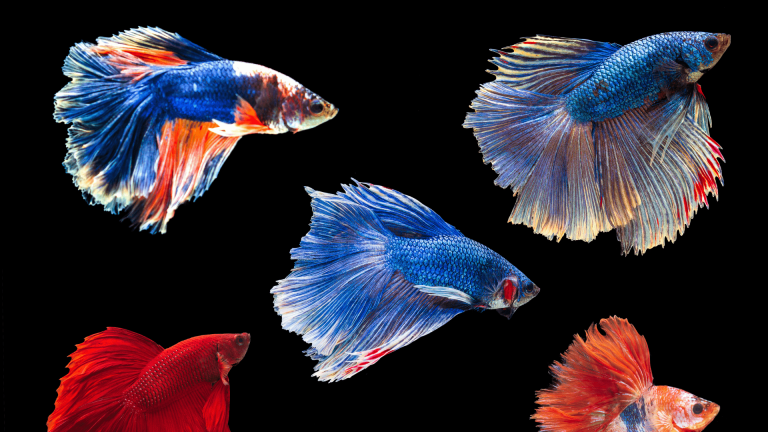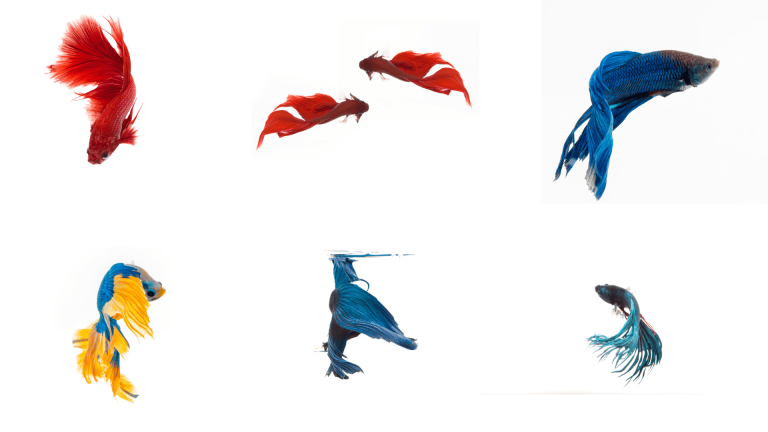The Perfect Betta Fish Tank Mates: A Harmonious Underwater Community
Discover the best Betta fish tank mates to create a harmonious and captivating community aquarium. Learn about the ideal companions for your Betta, their care requirements, and how to build a thriving aquatic environment. Find expert tips and first-hand insights for a successful tank setup.
Siamese fighting fish, or betta fish, are well recognized for their vivid colors and flowing fins, which make them a popular choice for aquarium hobbyists. While they are mesmerizing to watch alone, many aquarists wonder if these solitary fish can coexist with other tank mates. The good news is that careful planning and consideration can create a harmonious underwater community for your Betta. In this article, we’ll explore the best Betta fish tank mates to ensure a happy and healthy environment for all inhabitants.
Which Fish Can Live With Betta Fish?

Betta fish can coexist with various fish species, but choosing suitable tank mates won’t trigger aggression in the Betta or threaten its well-being is essential. Here is a list of fish that can generally live peacefully with Betta fish in a community tank.
Tetras
Neon tetras, ember tetras, glowlight tetras, and other peaceful tetra species can make excellent tank mates for Betta fish. They are generally small, colorful, and prefer to school together, which can reduce the chances of them bothering the Betta.
Corydoras Catfish
These bottom-dwelling fish are peaceful and social and come from various species. They are great tank mates for Betta fish and also help keep the tank clean by scavenging for food debris.
Harlequin Rasboras
Peaceful and attractive, Harlequin rasboras make good companions for Bettas. They are schooling fish and should keep in groups of at least six.
Kuhli Loaches
These eel-like fish are peaceful and prefer to be in groups. They add an exciting dynamic to the tank and typically don’t bother Betta fish.
Bristlenose Plecos
These algae-eating fish can help maintain a clean tank and coexist well with Betta fish due to their nonaggressive nature.
Dwarf Gouramis
Some aquarists have had success keeping a Betta with dwarf gourami, but it’s essential to monitor their behavior during the introduction phase.
Platies
Peaceful and colorful, platies can work well with Betta fish, especially in a larger tank with plenty of space and hiding spots.
Mollies
Like platies, mollies are generally peaceful and compatible with Betta fish in appropriate tank conditions.
Rasboras
Certain species of rasboras, such as chili rasboras or harlequin rasboras, are good tank mates for Bettas.
Remember that individual fish have unique personalities, and compatibility can vary. It’s crucial to observe the tank’s inhabitants closely during the initial introduction and prepare to separate them if any signs of aggression occur. Providing a well-planted and decorated tank with ample hiding spots will help reduce stress and promote peaceful cohabitation among tank mates. Additionally, ensure that the tank is sufficient to accommodate all the fish comfortably. A 20-gallon tank or larger is preferable for a Betta community tank.
Can Betta fish live with tetras?

Yes, Betta fish can generally live with tetras in a community tank. However, there are some important considerations to keep in mind to ensure a harmonious coexistence.
Tank Size
Make sure you have an adequately sized tank to comfortably accommodate both the Betta fish and the tetras. A 20-gallon tank or larger is preferable to provide ample space for swimming and reduce the chances of territorial behavior.
Group Size
Tetras are schooling fish and prefer to keep them in groups of at least six. Having a proper-sized school will help tetras feel more secure and reduce stress, which can contribute to a peaceful environment.
Species Selection
Opt for peaceful tetra species less likely to nip at the Betta’s fins or provoke aggression. Neon tetras, ember tetras, glowlight tetras, and similar peaceful tetras are generally good choices.
Betta Personality
Every Betta fish has its temperament. Some Bettas are more tolerant of tank mates, while others may be more territorial and aggressive. Observe your Betta’s behavior during the introduction phase to ensure it can coexist peacefully with the tetras.
Tank Environment
Create a well-planted and decorated tank with plenty of hiding spots. It will give the Betta and Tetras places to retreat and feel secure, reducing the likelihood of conflict.
Feeding Considerations
Bettas are carnivores, while tetras are omnivores. Ensure all fish receive appropriate nutrition by offering a varied diet that meets their needs.
Monitoring
Keep a close eye on the tank inhabitants during the initial introduction and the following days. If any signs of aggression or stress observe, be prepared to separate the Betta or tetras to prevent injuries.
Remember that individual fish have unique personalities, and compatibility can vary. While many Betta keepers successfully keep tetras with their Betta fish, there is always a degree of risk involved in introducing new tank mates. If, at any point, the Betta displays excessive aggression toward the tetras or vice versa, it may be necessary to rehome one of the species to ensure the well-being of all the fish in the tank. Always prioritize the health and happiness of your fish when considering tank mates for your Betta.
Are Betta fish good with others?

Betta fish are known to be solitary and territorial, especially other male Betta fish. In the wild, male Betta fish engage in aggressive territorial behavior, often called Siamese fighting fish. Due to their aggressive tendencies, keeping two male Betta fish together in the same tank is generally not recommended, as they are likely to fight, which can result in injury or even death.
However, female Betta fish can coexist in groups, known as sororities, under certain conditions. It is essential to have a larger tank (at least 20 gallons or more), provide plenty of hiding spots and visual barriers to reduce aggression, and introduce a group of female Betta fish simultaneously to distribute charge among them. Even in a female Betta sorority, close monitoring and being prepared to separate individuals if necessary are crucial.
Betta fish can potentially live with other fish species, but the choice of tank mates must make carefully. Peaceful and nonaggressive community fish, such as some tetra species, Corydoras catfish, rasboras, and certain dwarf gouramis, can be compatible tank mates for Betta fish in a well-planned community setup. However, individual Betta fish may have varying tolerance levels toward tank mates, so close observation during the introduction phase is vital.
Overall, while Betta fish can coexist with certain species under specific conditions, it is essential to understand and consider their territorial nature and choose tank mates thoughtfully to ensure the well-being of all the fish in the community tank. If you need more clarification about introducing tank mates to your Betta, it is always best to err on the side of caution and keep them in a separate tank.
Can you put two female betta fish together?

Yes, you can put two female Betta fish together in the same tank and coexist under certain conditions. Female Betta fish can live together in groups, and this setup is commonly known as a “female Betta sorority.”
However, it is essential to follow some guidelines to ensure the success of a female Betta sorority and prevent aggression:
Tank Size
The tank should adequately size to provide enough space for each Betta to establish its territory and reduce the chances of conflictMinimum 20-gallon tank capacity is advised.
Group Size
It is best to keep a group of female Betta fish to spread out antagonism and reduce the possibility of one Betta becoming too dominating. A sorority usually consists of at least four to six female Bettas.
Visual Barriers and Hiding Spots
Creating plenty of hiding spots and visual barriers using live plants, decorations, or tank dividers is crucial. These features help break the line of sight between the Bettas, reducing stress and potential aggression.
Simultaneous Introduction
Introduce all the female Betta fish to the tank simultaneously. It prevents one Betta from establishing territory before the others and reduces the risk of aggression during the introduction process.
Monitoring and Separation
During the initial days after introduction, closely observe the behavior of the Bettas. Some chasing and squabbling may occur as they establish their hierarchy, but excessive aggression or signs of injury may indicate that some Bettas are incompatible. Any Betta displaying severe attack may need to remove and housed separately.
Feeding Considerations
Ensure plenty of food is available for all the Bettas. You may need to place food in multiple locations to prevent competition during feeding.
It’s important to note that not all female Bettas will get along, even when these guidelines follow. Some female Bettas may be more aggressive or dominant than others, leading to conflicts. In such cases, you may need to separate the aggressive individuals to ensure the fish’s well-being.
Creating and maintaining a successful female Betta sorority requires careful planning, attention to the individual personalities of the fish, and diligent monitoring. If you are new to keeping Bettas or aquariums, it generally recommends gaining more experience before attempting a female Betta sorority. Keeping female Bettas separately or with other compatible species can also be a rewarding and lower-risk option.
Frequently Asked Questions (FAQ) about Betta Fish Tank Mates

Can Betta fish live with other fish?
Yes, Betta fish can coexist with other fish, but specific considerations exist. Male Betta fish should maintain alone because they tend to be lonely and hostile toward other males. However, female Betta fish can live together in groups called sororities. In a well-planned community setup, certain peaceful community fish can also be compatible tank mates for Betta fish.
Which fish are good tank mates for Betta fish?
Some good tank mates for Betta fish include peaceful community fish such as neon tetras, ember tetras, glowlight tetras, harlequin rasboras, Corydoras catfish, kuhli loaches, and bristle nose plecos. Nonaggressive invertebrates like ghost shrimp and Nerite snails can also be suitable companions.
Can I keep two male Betta fish together?
No, keeping two male Betta fish together is generally not recommended. Male Betta fish are highly territorial and often fight each other, leading to injuries or even death. They should be kept separately in their tanks.
How can I create a successful female Betta sorority?
To create a successful female Betta sorority:
- Ensure you have a tank of at least 20 gallons or more.
- Keep a group of at least four to six female Betta fish together and provide plenty of hiding spots and visual barriers using live plants and decorations.
- Introduce all the females simultaneously and closely monitor their behavior during the initial days.
- Be prepared to separate any overly aggressive individuals.
What should I do if there is aggression among tank mates?
If aggression occurs among tank mates, taking immediate action to prevent injuries is crucial. If a Betta is overly aggressive, consider removing it from the tank and housing it separately. If other tank mates are antagonistic towards the Betta, assess whether they are suitable companions and consider providing additional hiding spots or rearranging the tank layout.
Can Betta fish live with other types of Betta species?
Betta fish should generally keep from other Betta species. While some Betta species may appear similar, they can still exhibit territorial behavior and may not be compatible. Keeping different Betta species in separate tanks is best to prevent potential conflicts.
Can Betta fish live with snails?
Yes, Betta fish can live with certain types of snails, such as Nerite snails. Nerite snails are peaceful and won’t bother the Betta, making them good tank mates. Additionally, they help keep the tank clean by consuming algae.
What size tank do I need for Betta fish and their tank mates?
It’s preferable to have a tank capacity of at least 20 gallons or more for a Betta communal tank. Larger tanks provide more swimming space and reduce the likelihood of territorial disputes among tank mates.
Remember that individual fish have unique personalities, and compatibility can vary. Always observe your fish closely and be prepared to adjust the tank setup or separate the fish if any issues arise.
Conclusion About Betta Fish Tank Mates
While Betta fish can live with particular tank mates, creating a thriving community tank requires careful planning, consideration, and monitoring. Male Betta fish should always keep separate due to their territorial and aggressive nature. On the other hand, female Betta fish can thrive together in a sorority under the right conditions.
When choosing tank mates for Bettas, opt for peaceful and nonaggressive species that won’t nip at their long fins or provoke aggression. Some compatible options include certain tetra species, Corydoras catfish, rasboras, kuhli loaches, and peaceful invertebrates like ghost shrimp and Nerite snails.
Maintaining a harmonious environment involves providing adequate space, hiding spots, and visual barriers to reduce stress and territorial behavior. Always observe your fish closely during the initial introduction, and be prepared to make adjustments or separate individuals if necessary.
Each fish has its personality, so that that compatibility can vary. Always prioritize the health and well-being of your fish, and consider the unique needs of the species you choose. Following these guidelines and taking a thoughtful approach, you can create a thriving and peaceful community tank with Betta fish and their suitable tank mates.





